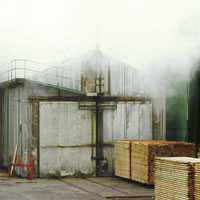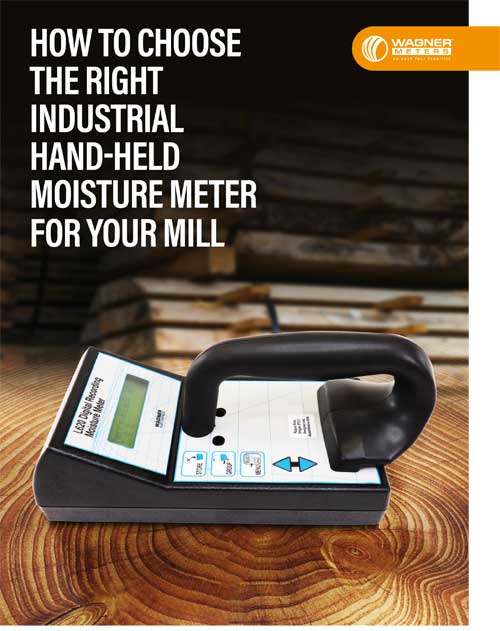Wood Manufacturing Process
 Whether you are a seasoned woodworker or just starting in the industry, learning about the wood manufacturing process is essential. By understanding the different stages involved in the process, you can make informed decisions about the wood products you use and create. So, read on and discover the exciting world of wood manufacturing.
Whether you are a seasoned woodworker or just starting in the industry, learning about the wood manufacturing process is essential. By understanding the different stages involved in the process, you can make informed decisions about the wood products you use and create. So, read on and discover the exciting world of wood manufacturing.
Step into the fascinating world of lumber drying mills, the powerhouse behind transforming trees into a wide array of top-quality wood products. As wood undergoes the manufacturing process, its inherent moisture content (MC) experiences a series of fluctuations influenced by the ambient temperature and relative humidity (RH). Learn more about the transformation process.
Wood Manufacturing Transformation Process:
- Head Rig: The primary saw cuts the tree into sawn pieces.
- Edging: Removing irregular edges and defects from sawn pieces.
- Trimming: The trimmer squares off the ends of lumber into uniform pieces based on market dimensions.
- Rough Lumber Sorting: Pieces are segregated based on the dimension and final product production: unseasoned (known as green), or dry.
- Stickering: Lumber destined for dry production is stacked with spacers (known as stickers) that allow air to circulate within the stack. (Green product skips this stage).
- Drying: Lumber is kiln-dried to facilitate natural moisture content evaporation.
- Planing: Smoothing the surface of each lumber piece and making its width and thickness uniform.
- Grading: The process of assessing the characteristics of each lumber piece in order to assign its “grade” (quality).

The success of wood manufacturing rests on the mill’s ability to retain the wood’s quality throughout the manufacturing process. Wood continually loses or gains moisture until its amount is in balance with the surrounding environment. The amount of moisture at that point is called the equilibrium moisture content (EMC) and depends mainly on the relative humidity and temperature of the surrounding air.
Kiln drying usually requires controlling the EMC conditions of the wood by monitoring and controlling the relative humidity (RH) and temperature in the kilns. A mill’s primary job is to stabilize and maintain optimum drying conditions for the wood during the kiln drying process.
moisture content technology is a vital component of modern lumber drying manufacturing. Technicians monitor moisture management systems. Numerous electronic manufacturers produce a range of lumber moisture content measurement systems for large lumber-drying manufacturing operations.
While maintaining and controlling the relative humidity and temperature levels in the kilns, lumber producers continuously measure and monitor the changes in the wood’s moisture content to eliminate the over-drying or under-drying of the wood. These moisture content measurements can apply to a whole stack of wood in the kiln or to an individual spot-checked wood piece.
From the moment the log enters into production to its shipment, lumber manufacturers depend upon integrated moisture content measurement and management systems to achieve quality production on every piece of lumber manufactured by the mill.

Free Download – How to Choose the Right Industrial Hand-held Moisture Meter for Your Mill
The lumber drying process is the origin requiring mills to depend on proper wood moisture management procedures. However, many consumers and builders mistakenly believe that wood moisture content concerns end when the wood is shipped out of the mill.
The moisture content of wood must be constantly measured and controlled as wood will continually lose and gain moisture until it is in balance with the surrounding atmospheric conditions. The conclusion of our series, Wood Production, takes moisture content control to the installation site.
Learn more about our forest products and how they can help you.
Forest Products
Further Reading:
Wood Production: Manufacturing & Kiln Drying
As Sales Manager for Wagner Meters, Ron has more than 35 years of experience with instrumentation and measurement systems in different industries. In previous positions, he has served as Regional Sales Manager, Product and Projects Manager, and Sales Manager for manufacturers involved in measurement instrumentation.
Last updated on March 1st, 2023




Good afternoon,
I’m interested in creating wooden custom accessories and hair grooming tools. I would like the items to be imprinted with my artwork.
Attached is the example of the earring style I would like to create with my art. I want the earrings to be made of very thin wood board or some other lightweight material.
Can you recommend a company that that could create this with my digital artwork images?
Thank you in advance,
Jamila Sampson
Jewelbeautyful.com
jewelbeautyful@gmail.com
404-822-1906